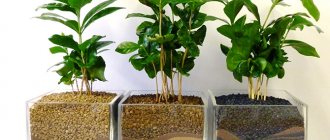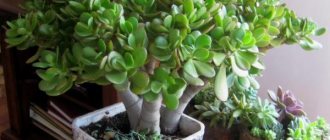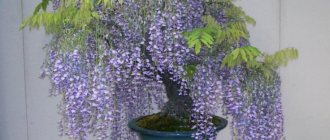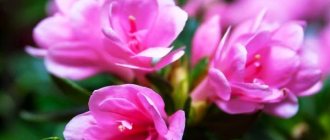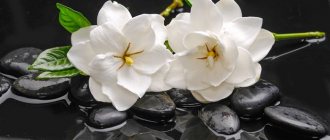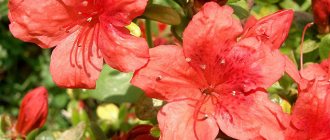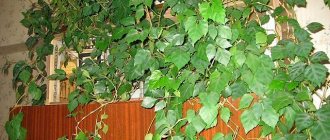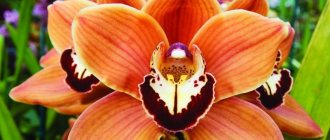How nice it is to eat a tangerine grown with your own hands! Both the taste and aroma are incomparable. And the tree itself is incredibly beautiful, pleasing all year round with its oily, dense foliage and sunny fruits. Growing tangerines at home is not an easy task, but with some effort and patience, even a beginner can cope with it. The right variety and compliance with the rules of care will give results - such a plant will delight its owner for at least 20 years. We will tell you in detail how to plant a tangerine and care for it at home.
Choosing a variety of decorative tangerine
In order not to be disappointed and get fruits already in 4-5 years, you should approach the choice of the future plant correctly. Breeders have developed dwarf varieties of tangerines especially for home breeding. They require less care, grow quickly, bloom and bear fruit abundantly.
It is best to choose from the most unpretentious varieties:
- Pioneer: large fruits weighing about 90 g, low, branched crown;
- Sochi: the weight of each tangerine exceeds 80 g, thin-barked;
- Kawano-Wase: height - up to 1 m, bears fruit in the second year after planting, yield from one tree - 100-120 tangerines with a diameter of 5-7 cm each;
- Nova: fragrant flowers, sweet fruits, but difficult to peel;
- Unshiu: reaches 1.5 m in height, bears fruit in the third year, seedless.
The choice of variety depends on what conditions will be created for the full development of the plant.
Attention! You should not purchase tall specimens for a small room. The tangerine will need space and a large pot. It is better to grow very low-growing varieties on the windowsill, for example, Pioneer.
Description
Indoor tangerine is an evergreen plant from the Citrus genus. In nature, its analogue reaches an impressive height, up to five meters: indoors, of course, the tangerine is not allowed to grow to such an extent. In closed spaces, it can be grown in residential premises, greenhouses, greenhouses, on insulated balconies and loggias.
Decorative tangerine is a very spectacular and bright plant. Not only does it look beautiful, but it also smells great. The foliage is beautiful, dense, and has a gorgeous, rich hue.
Growing indoor tangerine is accompanied by magnificent flowering: the plant pleases with white, fragrant, small buds collected in brushes. There are species that can bloom for a long time, sometimes all year round. During this period, tangerine smells especially pleasant and bewitching.
Its fruits also ripen - real little tangerines: against the background of rich green foliage they look like miniature Chinese lanterns. Fruiting occurs with good care: small, neat, spherical, flattened fruits of orange or red color appear on the plant.
They usually ripen at the end of the year, and you don’t have to bother with artificial pollination for this. You can purchase a ready-made plant with already ripe fruits. These bright tangerines should not be eaten as food, since in room conditions they require a lot of fertilizer to ripen.
Planting and propagating indoor tangerine
Creating ideal conditions for a plant is half the success. Mandarin loves the sun, but does not tolerate too high temperatures. It is demanding of moisture, but dies with excessive watering. It grows all year round, but requires winter dormancy to bear fruit.
Where to plant
The optimal place for a homemade tangerine is a window sill on the south or west side of the house. With short daylight hours, the plant needs additional lighting. A draft is detrimental to it, so the location is chosen taking into account the possibility of careful ventilation. You can’t often move the tangerine from place to place - there is a high probability of stress. Only once every two weeks is the pot with the plant rotated 10° so that the entire crown receives the same amount of ultraviolet radiation.
Important! In summer, the tangerine needs “walks” in the fresh air. If it is possible to keep it outside throughout the warm season, that’s good. The main thing is to protect it from the wind.
Requirements for soil and pot
Mandarin does not like acidic soils, so there should be no peat in the ground. It is best to purchase a special substrate for citrus fruits at a flower shop - it is ideal for growing a heat-loving southern plant at home. Soil acidity (pH) should not exceed 6.5-7 (usually it is indicated on the package with soil).
You cannot immediately plant a tangerine in a large pot - there is a great danger of waterlogging or acidification of the soil. To begin with, a container with a depth of 8-10 cm and a diameter of 7-8 cm is enough. Only when the root system fills the volume of the pot, do they transfer it to a larger one, increasing the diameter by 4-6 cm annually. Flowering and fruiting plants should not be replanted. Mature trees do not move at all, limiting themselves to updating the top layer of soil.
Reference. The material of the pot is not so important; it can be ceramic, plastic or wood. The main thing is that there are drainage holes for good soil aeration and protection from mold.
Growing from seed
The most labor-intensive process and unpredictable result. When growing tangerines from seeds, the plant does not bloom for a long time, and fruiting may not occur at all. The fruit will be smaller and have a different taste than the parent fruit. But it is interesting to observe the whole process from germination to ripening.
For germination, only healthy seeds are taken - they do not look dried out, without damage or black tops. The faster the grain gets from the tangerine into the ground, the better. But if this is not possible, the seeds are germinated in damp gauze.
Meanwhile, prepare the container. At the initial stage, even a 0.2 liter plastic cup with drainage holes pierced in the bottom will do.
Soil for citrus fruits is purchased at a flower shop, as it is guaranteed to be disinfected and has optimal acidity. Hatched or fresh seeds are deepened 4 cm into the soil. Provide moderate watering as the top layer of soil dries.
Important! Do not cover with jars or plastic. The plants tolerate home cultivation well, but greenhouse conditions are detrimental to them.
After 15-30 days (depending on the variety), the first shoots will hatch. When four leaves appear, the seedlings are transferred to pots with a diameter of 8-10 cm and a depth of at least 12-15 cm. If all the seeds have sprouted, they are placed in separate containers. It is best to plant at least 5-8 seeds. Firstly, not everyone will germinate. Secondly, for vaccination.
Tangerines grown from seeds take a long time to grow and require additional procedures:
- Crown formation. Only branches of the 4th-5th order bear fruit, so first pinch off the main shoot after reaching 35-40 cm in height. Then, as the side branches appear, they are cut off after the appearance of 5-6 leaves. The whole process takes 4-5 years.
- Feeding. It is best to fertilize with special mixtures for citrus fruits, but organic ones are also suitable. Tangerines respond well to mullein diluted in a ratio of 1:10.
- Hibernation. In order for the tangerine to begin to bloom, at the age of 5-6 years it needs seasonal dormancy at a temperature not higher than +10...+12°C and darkening for 3-4 months.
- Stimulation of flowering . If, after a period of winter dormancy, the tangerine does not bloom, perform the following procedure: copper wire is tightly tied to the lower part of the trunk, as a result of which the sap flow slows down and the plant blooms.
- Load control. For every 20 leaves, one flower or ovary is left. This way the plant will not be overloaded and will be able to bear fruit fully.
From seedlings
The most proven way to get guaranteed results. The seedlings are either grown from cuttings or already grafted. The most resilient and low-growing varieties are grown for sale. You can get a harvest already in 2-3 years (depending on the age of the plant). Their care is minimal: lighting in winter, timely watering and fertilizing.
From layerings
A good option for getting a home plant from exactly the variety you like. This can be done where tangerines grow in their natural environment.
Select a one-year-old branch 20-25 cm long and cut it obliquely with a sharp knife. The bottom of the layer is freed from bark and leaves, the top is pinched. Then wrap it in a damp, thick cloth, place it at an angle of 45° in a shallow dish and periodically add water. 2-3 weeks after the roots appear, the cuttings are transplanted into a pot with a diameter of 20-25 cm and a depth of 30 cm and placed in a permanent place.
Further care consists of regular watering, fertilizing with nitrogen fertilizers and crown formation. After 3-5 years (depending on the variety), the tangerine will need winter rest before flowering.
Nutrition
If you have a tangerine tree at home, home care involves periodic fertilization. The first time this is done is in April. Then until winter the plant is fed every 2 weeks. This is done for good development of the tree, budding and fruiting. Thanks to summer fertilizing, protection against bitterness of fruits is provided. There is no need to feed in winter.
You need complex fertilizers sold in stores. There are special fertilizers for citrus fruits. Increased fruiting will be achieved with fish soup. You will need to boil fresh small fish (200 g) in water (2 liters) for half an hour. The broth must be filtered, cooled and added to the complex fertilizer.
Tangerine grafting
If you managed to grow a plant from a seed, but it does not bear fruit, there is a way out. A bud from a cultivated tree is grafted onto a tangerine. But it is best to do this in advance, until the sprout exceeds 20 cm in height.
For the procedure, you will need a scion from a varietal plant - a bud with a leaf petiole.
On a seedling grown from a seed, an incision is made in the bark in the shape of the letter T, where the top crossbar is 1 cm long and the “leg” is 2.5 cm. The edges are folded back and a bud of the cultivated plant is inserted inside. Then the bark is pressed tightly, the cut is treated with garden varnish and tightly bandaged with a bandage. After 3-4 weeks, the cuttings of the grafted bud will turn yellow and fall off. The bandage is removed and the top of the stone fruit plant is cut at a 45° angle 5 cm above the new branch.
This is interesting! How does a tangerine bloom? Once a year, in spring, small white flowers with a pleasant aroma shower the entire tree.
Purchase
Specialized nurseries sell mature trees that are already bearing fruit. You just need to bring them home, water them, and feed them. Formed citrus fruits are expensive. Therefore, it is easier to grow your own tree from a sprout or seed.
The first method is considered less troublesome, but when buying a young tree you need to ask the sellers for a certificate. There are sellers who pass off calamondins as tangerines, which have a citrus aroma and bear fruit, but the fruit has no taste.
If you want to grow a tangerine at home, you should purchase a ready-made seedling. Plants are usually sold with a closed root system, that is, in an earthen coma or pot, packaged in a bag. In the first case, a mandatory transplant into a container is required. And the economical option is the second method, that is, growing a tree from a seed.
Features of caring for a tangerine tree at home
No matter how the plant is planted, it requires maintaining certain conditions and careful care.
Temperature
In the summer, tangerine feels good outside, even at night, if it is warm enough. The optimal temperature is +25…+30°С. In spring and during the flowering period, the air should not warm up above +18...+20°C, otherwise the buds will fall off.
In winter, tangerine is in a resting phase at a temperature of +10...+12°C.
Lighting
Mandarin is a southern plant that loves long daylight hours. During the rest period it needs darkening. In autumn and spring, it requires additional lighting, extending the day by 2-3 hours in the morning and 3-4 in the evening. To do this, use special phytolamps or ordinary fluorescent ones.
Humidity
In their natural environment, tangerines grow in a subtropical climate. There the air humidity reaches 100%. But in an apartment they feel great even at 60-65%. To ensure this level, it is enough to use a humidifier or place open containers of water near the pots.
Watering
You should not use chlorinated tap water - this is destructive for most house plants . For watering, it is best to use rain or bottled water at a temperature not lower than +20°C. If this is not possible, let the tap water sit for 2-3 days and only then water the tangerines.
The soil should not be over-moistened, nor should it be allowed to dry out. The guideline is the top layer of soil - there should be no dry crust on it. In summer, watering is done more often, in winter - less often.
Tangerines are very responsive to spraying. Using warm, settled water from a spray bottle, moisten the entire crown with the exception of the buds during the flowering period 2-3 times a week.
Feeding
At least twice a month, special complex fertilizers for citrus fruits are applied to the soil (they are sold in flower shops) . In summer, it is better to use organic manure - manure diluted with water in a ratio of 1:10. But in this way there is a high probability of introducing pests or pathogens into the soil.
If there is a need for transplantation or flowering, or the tangerines are at rest, you cannot feed them.
Protection from diseases and pests
Mandarin is often attacked by insects and pathogens.
Main pests:
- spider mite;
- aphid;
- citrus nematode;
- scale insect;
- whitefly;
- greenhouse thrips;
- mealybug.
If insects are found on the plant, they are fought with insecticidal preparations: “Actellik”, “Sulfarid”, “Aktofit”, “Ferramol”. But they cannot be used during the flowering or fruiting period, so that harmful substances do not accumulate in the fruits.
In this case, gentle methods are used:
- pests are removed from plants manually;
- tangerines are sprayed with soap (10 g per 1 liter of water) or vinegar (1 tsp 9% per 1 liter of water) solution;
- if affected by a nematode that lives in the soil, the bush must be transplanted into clean soil.
Pathogenic microorganisms cause diseases of tangerines:
- Anthracnose: with excessive moisture, light spots appear on the leaves, which darken over time. The infected parts of the plant are cut off, and the bush is sprayed with any fungicide.
- Late blight: brown rings on trunks. If found, they are cleaned off and the tree is sprayed with a 3% solution of copper sulfate.
- Gommosis: brown spots on branches leading to damage to the bark and cracks. Clean the infected areas and treat with 3% copper sulfate.
- Root rot: yellowing and falling of leaves. As a rule, once detected, it is too late to save the plant.
Tangerine diseases caused by viruses or bacteria cannot be cured.
Watering
How to properly water a tangerine tree? In summer this should be done often and generously. In winter, you can water it twice a week. The soil in the pot should not dry out completely. The need for watering is indicated by drying of the top layer of soil.
You can check whether watering is required experimentally. You just need to take a pinch of earth in your fingers and squeeze. If it crumbles, watering is necessary. Some gardeners recommend using hot water, which is supplied centrally. It is less chlorinated and more soft. It is cooled in advance and left for a day. This procedure must be performed with any water for this tree.
In winter, water for irrigation must be heated to +30...35 degrees. Otherwise, there is a risk of overcooling the roots of the plant, and it will wither. In summer, the water heats up on its own as it settles. If you follow these rules, your homemade tangerine tree will bear bright fruits.
Replanting and pruning
To form a tangerine crown, two methods are used: pinching the tops and forced growth in the desired direction.
In the first case, the main trunk is cut off when it reaches 25-30 cm and all side branches above 4-5 leaves. This allows the tangerine to branch and take on a fan-shaped shape for better illumination of the entire crown.
In the second case, all the branches are tied to the edge of the pot with wire, forming a palm-like appearance. Then the tree will branch well and produce a lot of leaves, making it look beautiful. This method also stimulates the tangerine to bloom.
Plants are replanted as they grow. Until the age of five - annually, then - once every 4-6 years. The optimal time is early spring. In order not to cause stress to the tangerine, transplant it together with a lump of earth into a pot with a diameter 5-6 cm larger than the previous one.
This is interesting:
Health benefits and harms of tangerines, rules of consumption.
What are the benefits of kaffir lime leaves and how to use them in cooking.
